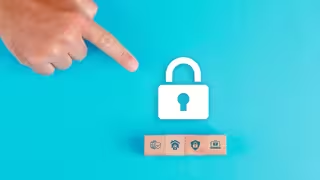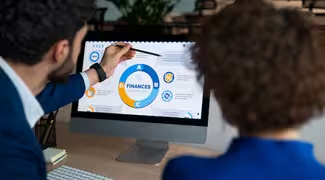How to Build a Sustainable Business Model in 2024

In 2024, building a sustainable business model has become more crucial than ever. With increasing environmental awareness, shifting consumer preferences, and evolving government regulations, businesses must adapt to remain competitive and relevant. Sustainability goes beyond just being eco-friendly; it encompasses economic viability, social responsibility, and long-term growth. In this blog, we will explore the key steps that small and medium-sized enterprises (SMEs) can take to build a sustainable business model in 2024.
1. Define Your Purpose and Values
A sustainable business starts with a clear purpose. Why does your business exist, and how can it contribute to a better world? Defining your company’s purpose and aligning it with sustainable values will guide your strategy and decision-making.
To start, ask yourself:
- What problem does my business solve? Understanding your unique contribution to the market is critical to sustainability.
- How can I operate more responsibly? This could involve sourcing materials more ethically, reducing waste, or supporting fair trade practices.
For example, many businesses are adopting corporate social responsibility (CSR) principles, which involve making conscious decisions about the environmental and social impact of their operations. These values not only guide internal processes but also resonate with consumers who are increasingly drawn to ethical businesses.
2. Embrace Circular Economy Principles
A circular economy is one where resources are reused, recycled, or regenerated rather than discarded. In a linear economy, products are made, used, and thrown away. In contrast, a circular model seeks to extend the lifecycle of materials and minimise waste.
To adopt a circular business model, consider:
- Product design: Create products that are durable, repairable, and recyclable. For example, some clothing brands now offer repair services for their garments, extending their lifecycle.
- Material sourcing: Opt for renewable or recycled materials to minimise the environmental footprint of your production processes.
- Waste reduction: Aim to eliminate waste at every stage of the supply chain. This could involve using offcuts from production, reducing packaging, or repurposing by-products.
By integrating these practices, businesses can lower costs, reduce environmental impact, and appeal to eco-conscious consumers.
3. Prioritise Energy Efficiency
Energy efficiency is a key pillar of any sustainable business model. Not only does it reduce your carbon footprint, but it also helps to lower operational costs. In 2024, energy-efficient technologies are more accessible and cost-effective than ever, making it easier for SMEs to implement sustainable energy practices.
Here are some ways to prioritise energy efficiency:
- Switch to renewable energy: Solar panels, wind energy, and geothermal systems are becoming increasingly affordable. Consider switching to renewable energy sources for your office or production facility.
- Invest in energy-efficient technology: From energy-efficient lighting to machinery and appliances, upgrading to more efficient technologies can drastically reduce your energy consumption.
- Monitor and optimise energy use: Regularly track your energy usage and identify areas for improvement. Smart meters and energy management systems can help you gain better insights into how your business is using energy.
By prioritising energy efficiency, businesses can significantly reduce operating costs while contributing to a more sustainable future.
4. Focus on Sustainable Supply Chains
Building a sustainable business model in 2024 means looking beyond your company’s immediate operations and considering your entire supply chain. A sustainable supply chain ensures that the raw materials, components, and services your business relies on are sourced ethically and with minimal environmental impact.
Steps to build a more sustainable supply chain include:
- Partner with responsible suppliers: Choose suppliers that prioritise sustainability and adhere to environmental and social standards, such as fair labour practices and reduced emissions.
- Reduce transportation emissions: Wherever possible, source materials locally to reduce transportation-related carbon emissions. Consider greener shipping options or offset your transportation footprint by investing in environmental projects.
- Set sustainability criteria for partners: Make sustainability a core criterion when selecting vendors or partners. This can include factors such as the use of renewable energy, responsible waste management, and ethical labour practices.
By focusing on sustainable sourcing and reducing the environmental impact of your supply chain, your business can enhance its credibility and contribute to long-term sustainability.
5. Engage Employees in Sustainability
A truly sustainable business model involves everyone in the company, from leadership to entry-level employees. Engaging your team in sustainability initiatives can foster a culture of responsibility and innovation.
Here’s how to engage employees in sustainability:
- Provide sustainability training: Educate your employees on sustainability practices and how they can contribute to reducing the company’s environmental impact. Training can cover topics such as waste reduction, energy-saving techniques, and ethical business practices.
- Encourage green habits: Simple initiatives like recycling programmes, reducing paper usage, and promoting remote work can help create a more sustainable workplace.
- Recognise and reward efforts: Acknowledge employees who take initiative in sustainability efforts. Rewards, recognition, or even small incentives can motivate your team to stay committed to your sustainability goals.
An engaged workforce is more likely to come up with innovative ideas that will further your sustainability mission, creating a positive cycle of improvement.
6. Monitor Your Impact with Sustainable Metrics
To ensure your business model is truly sustainable, it’s essential to measure your impact. This involves setting clear sustainability goals and using key performance indicators (KPIs) to track your progress. These could include metrics like energy consumption, carbon emissions, waste production, and water usage.
Here are some steps to monitor and improve your sustainability efforts:
- Set measurable goals: For example, you might aim to reduce energy consumption by 20% within a year or cut waste by 50% over the next five years.
- Use sustainability reporting tools: Many businesses now use software platforms to track their sustainability metrics and generate reports. These tools provide real-time insights into your environmental impact and help you stay accountable.
- Adjust based on data: Regularly review your progress and adjust your strategies as needed. Sustainability is an ongoing process, and continuous improvement should be part of your long-term plan.
Monitoring your impact not only ensures that you’re on track but also provides valuable data to share with stakeholders, customers, and partners, enhancing your business’s reputation.
7. Build Strong Relationships with Customers and Communities
In 2024, customers are more conscious of where they spend their money. Consumers are looking for businesses that align with their values and make positive contributions to society. As a result, building strong relationships with both customers and local communities is essential for a sustainable business model.
Here’s how to build meaningful relationships:
- Engage with your community: Support local causes, charities, or environmental initiatives. Showing that your business cares about its community can improve brand loyalty and strengthen your reputation.
- Communicate your sustainability efforts: Be transparent about your sustainability initiatives and share your progress with customers. This can include publishing an annual sustainability report, sharing success stories on social media, or including sustainability information on product packaging.
- Encourage customer participation: Invite your customers to be part of your sustainability journey. For example, offer incentives for recycling old products or encourage customers to choose eco-friendly options.
By building relationships based on shared values, your business can create a loyal customer base that supports your long-term sustainability goals.
Conclusion
Building a sustainable business model in 2024 is not just a trend—it’s a necessity. As consumers, investors, and governments place increasing emphasis on sustainability, businesses that fail to adapt risk being left behind. By defining your purpose, embracing circular economy principles, prioritising energy efficiency, and engaging your employees and customers, SMEs can create a sustainable business model that is both profitable and responsible.
Sustainability isn’t just good for the planet—it’s good for business. By adopting sustainable practices, you’ll not only reduce costs and improve efficiency but also attract more customers and investors who are increasingly seeking out businesses that prioritise environmental and social responsibility.










